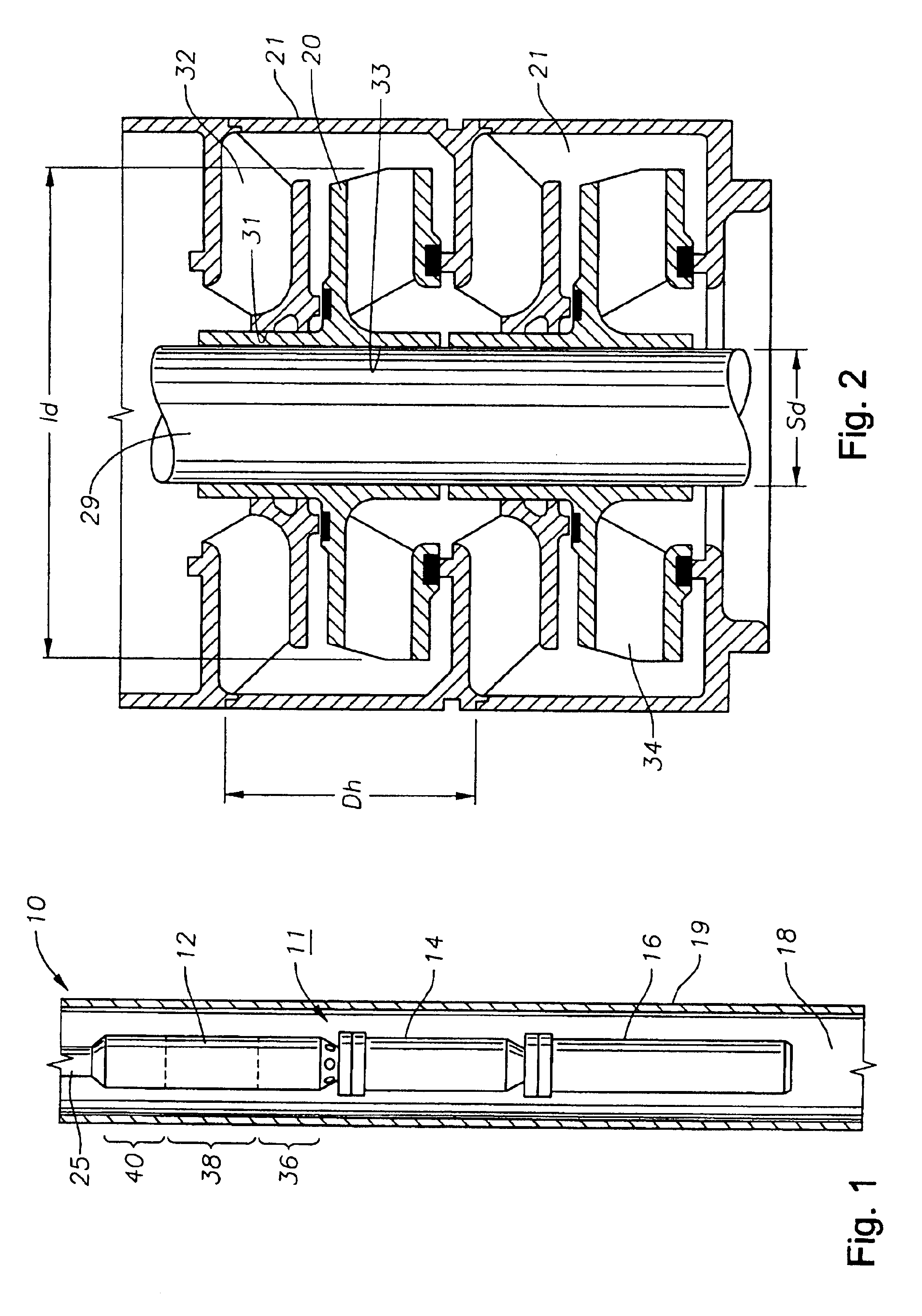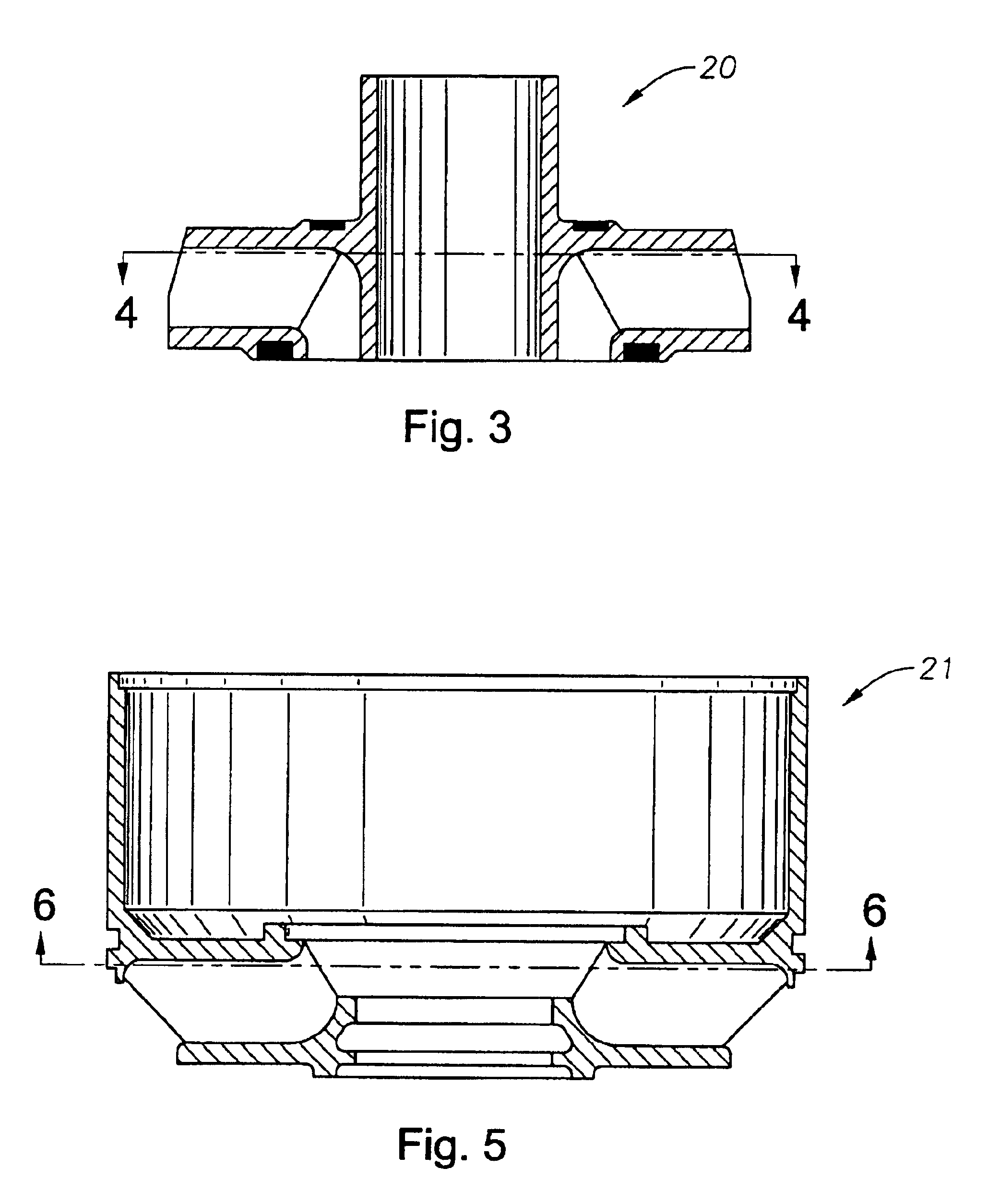Electric submersible pump with specialized geometry for pumping viscous crude oil
a submersible pump and viscous fluid technology, applied in the direction of positive displacement liquid engine, wellbore/well accessories, sealing/packing, etc., can solve the problems of pump diameter and temperature rise as oil passes through the pump, and achieve the effect of imparting energy, and minimizing the length of the van
- Summary
- Abstract
- Description
- Claims
- Application Information
AI Technical Summary
Benefits of technology
Problems solved by technology
Method used
Image
Examples
Embodiment Construction
Referring to the drawings, FIG. 1 generally depicts a well 10 with a submersible pump assembly 11 installed within. The pump assembly 11 comprises a centrifugal pump 12 that has a seal section 14 attached to it and an electric motor 16 submerged in a well fluid 18. The shaft of motor 16 connects to the seal section shaft 15 (not shown) and is connected to the centrifugal pump 12. The pump assembly 11 and well fluid 18 are located within a casing 19, which is part of the well 10. Pump 12 connects to tubing 25 that is needed to convey the well fluid 18 to a storage tank (not shown).
Referring to FIG. 2, centrifugal pump 12 has a housing 27 (not shown in FIG. 2) that protects many of the pump 12 components. Pump 12 contains a shaft 29 that extends longitudinally through the pump 12. Diffusers 21 have an inner portion with a bore 31 through which shaft 29 extends. Each diffuser 21 contains a plurality of passages 32 that extend through the diffuser 21. Each passage 32 is defined by vanes...
PUM
 Login to View More
Login to View More Abstract
Description
Claims
Application Information
 Login to View More
Login to View More - R&D
- Intellectual Property
- Life Sciences
- Materials
- Tech Scout
- Unparalleled Data Quality
- Higher Quality Content
- 60% Fewer Hallucinations
Browse by: Latest US Patents, China's latest patents, Technical Efficacy Thesaurus, Application Domain, Technology Topic, Popular Technical Reports.
© 2025 PatSnap. All rights reserved.Legal|Privacy policy|Modern Slavery Act Transparency Statement|Sitemap|About US| Contact US: help@patsnap.com



